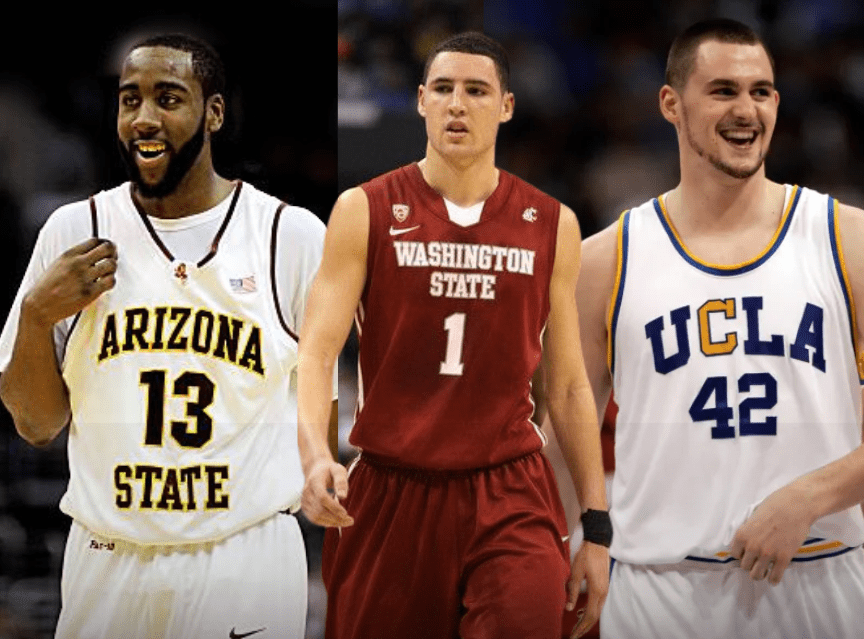Watching my beloved Pac-12 in her final days, as a 4 year Pac-10 and Stanford University alum, was painful. It’s hard to fathom that the rich tradition, rivalries and culture are withering away by the day. The Pac-12 is a conference of great academic schools that contributed to basketball history and culture of the west coast. Legacies can quickly turn into folklore without some form of lineage to protect the narratives. While the sports world looks ahead at what’s to come, particularly March Madness, there’s a neglected population of former athletes that will have a portion of their history buried alongside the conference once March Sadness runs it’s course.
I entered what was then the Pac-10 during the 2005-2006 season as a 3-star recruit to Stanford University from Corona, California. I grew up in the backyard of the Tobey Bailey Bruins and Craven Twin Trojans patiently waiting my turn to leave a stamp on the most prestigious “western” conference of college basketball. I arrived into a Pac-10 conference on the verge of hosting a multitude of future NBA All-Stars and an unprecedented run of three straight Final Four appearances by UCLA with rosters infused with local talent. During my era, UCLA was the team to beat and, aside from being from Southern California, those games meant more to me because I grew up playing against many of their players for years prior. As an athlete, games mean more when there are multiple personal endeavors fueling your passion to compete. This shuffling of PAC-12 teams across the country has ripped the soul out of West Coast collegiate basketball and decimated regional basketball culture at this level. The proximity of interstate rivalries mean so much more when you can feel the rivalry in the stands and local bars because of the history between teams. It’s sad to say that will be a rarity moving forward and all for what?
The heart and soul of college basketball has now been tarnished with dollar signs. Universities all over the nation are changing conferences in a chase for compensation of conference TV deals, and hopes of increased merchandise, ticket sales and other financial resources. For so long, the worry and fight against allowing student athletes to get paid was justified because it would supposedly be the death of college sports. The honorable Ed O’Bannon led the charge in the player’s fight against the NCAA. His efforts got us a settlement payout for use of our likeness which was the beginning of the evolution to NIL. NIL has now kept more quality talent in college – not only American but international talent as well. In the end, it was the governing body of college athletics and the universities that were seemingly overcome with greed and thirst for money. That alone has done more damage to the state of college basketball than any athlete’s paycheck.
College basketball will never be the best basketball product you can put on the floor, but March Madness shows the history and passion can compete with any level. As we continue to erase sacred history and create new memories, it would be wise to protect the passion that has elevated college hoops to where it is today. The death of the Pac-12 is a precursor to a wealth of new in-conference matchups void of tradition and relevance to not only the fans but the players as well.
It’s also important to note that the reason the Pac-12 was able to entice many homegrown players to remain on the west coast to attend school was because of not only the opportunity to compete against elite talent but student-athletes could also get an elite education. At this level of college basketball, many players prioritize basketball when choosing a school, yet the ability to pursue a meaningful degree influences a decision as well. Academically, Pac-12 schools such as UCLA, Cal, Washington and Stanford offer a quality of education that casts shadows over a large majority of schools in their conference-to-be. Excellence on and off the court is no easy task and it’s a shame that a conference with slate of prestigious universities is on the verge of perishing from existence.
Ideas for solutions have been floating around and we’ve surpassed the point of no return, thus leaving college hoops on a crash course with more change. There is no easy answer for what solution is fair yet I hope the forthcoming alterations bear some resemblance to the regional structure of the NCAA we once knew. At the very least if we can salvage the college basketball culture at the local level by protecting the rivalries then games before the madness in March won’t exude the flat ambiance non-conference games tend to.
In the aftermath of realignment, perfection is not my expectation. I just hope once we settle into the new normal that record books and history will have a home, and some Gen Z student-athletes will have less grueling travel demands. My condolences go out to the student-athletes that were on course to make Pac-12 history and will now have to start over or settle for leaving their legacy solely at the institution. I’m hopeful that the increased cross country road trips won’t affect the players’ ability to perform while balancing rigorous academics. On the bright side, former Pac-12 schools will get to matchup against a new caliber of opponents they wouldn’t typically see until tournament time in March. Though the farewell tour for my beloved Pac-12 is over, we’ll have a couple more weeks to savor the last of these historic universities representing this storied conference in the tournament. March sadness is in full swing but, fortunately, we can still witness the last bit of Pac-12 history be made in postseason play.
